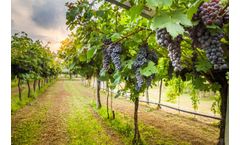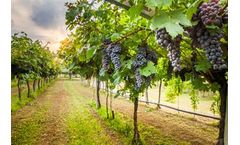Wine Production Process Articles & Analysis
9 articles found
You obviously don’t need a centrifuge for winemaking. For nearly 10,000 years humans have been stomping grapes, mashing up fruit and honey, or spitting starchy root pulp into jars, then letting it ferment. Wine happens. That said, most commercial-scale winemakers use centrifuges. Why? Because centrifugation is a quick and effective method for separating liquids and insoluble matter without ...
ByTrucent
Fermentation, the chemical process that uses yeast to convert sugars to ethanol, is at the heart of the wine production process and requires accurate CO₂ measurement to ensure quality wines. Temperatures and conditions in wineries are very carefully controlled to ensure that fermentation does not occur too fast, ...
The VITISPEC project is a 2 year industry driven research and development project that is being funded by the European Commission’s Seventh Framework Programme under ‘Research for SME – ...
For reds, solids are left in the must, to create a more flavorful wine.Next, the young wine is transferred to fermentation tanks. The fermentation process begins when yeast is introduced to the must. Most winemakers today use commercial yeasts, so they can control the predictability of the final product, though some winemakers (much like certain ...
Sweetener Membrane filtration and continuous ion exchange technology: reform sweetener production process. Wine Crossflow membrane filtration for wine clarification solution is an ideal way for wineries. ...
Fermentation, the chemical process that uses yeast to convert sugars to ethanol, is at the heart of the wine production process and requires accurate CO₂ measurement to ensure quality wines. Temperatures and conditions in wineries are very carefully controlled to ensure that fermentation does not occur too ...
Fermentation, the chemical process that uses yeast to convert sugars to ethanol, is at the heart of the wine production process and requires accurate CO₂ measurement to ensure quality wines.Temperatures and conditions in wineries are very carefully controlled to ensure that fermentation does not occur too fast, distorting the ...
With the help of an investment from the Canadian Agricultural Adaptation Program (CAAP), the Wine Council of Ontario (WCO) has launched a project to help find solutions that will meet its members’ environmental and economic needs. ...
A case study on the Pasqua Vigneti e Cantine Winery, Verona Italian wine is enjoyed by many all over the world. However, to grow the best grapes, develop the best flavour and ensure success on a global scale, a seamless production process needs to be in place behind the scenes. ...









